🧶 Soil → Linen Cloth
This page will document my 2024 experiment of going from flax seeds that I plant, all the way to having real, usable linen cloth.
Some of my intentions are:
- To do this process in a veganic fashion as much as possible, aiming not to use any products derived through animal harm.
- To not use any new plastic or fossil-fuel-derived products, although I may use scavenged plastic discarded by others.
- To fashion any tools needed myself, from simple, local materials.
As much as I can, I want to see what is possible without relying on tools and supply chains and systems that harm creatures and environments.
I want to see for myself that it is possible to create cloth under these conditions.
The other core intentions are to educate and inspire! I would get so much joy in seeing others use this documentation to explore the process of growing textiles themselves.
I want to see a world where textiles are treated as amazing and precious (because they are), are cared for with love, and live long lives before being composted back into the Earth.
Table of Contents
1. Seeds
I was fortunate enough to receive a gift of a small supply of flax seeds from the local organization EartHand.
If I hadn't of been so lucky, I would have reached out to local gardeners and small organizations to source some initial seeds. In the worst case, I would have sought out a local gardening store.

2. Planning
The proportion between volume of seeds and soil surface area that I was told‒by a very experienced peer‒is 1 tablespoon (~15mL) of flax seeds per square foot of soil area.
I wanted to plant 1 square foot of seeds, so: one tablespoon of seeds!
I scrounged the apartment building's recycling bins for containers, and fashioned a really big one out of a plastic water jug that was thrown away. A few other pots were found from folx who were giving them away, and the rest were ones I already had. I don't think I've ever purchased a pot in my life: they just tend to appear here and there.
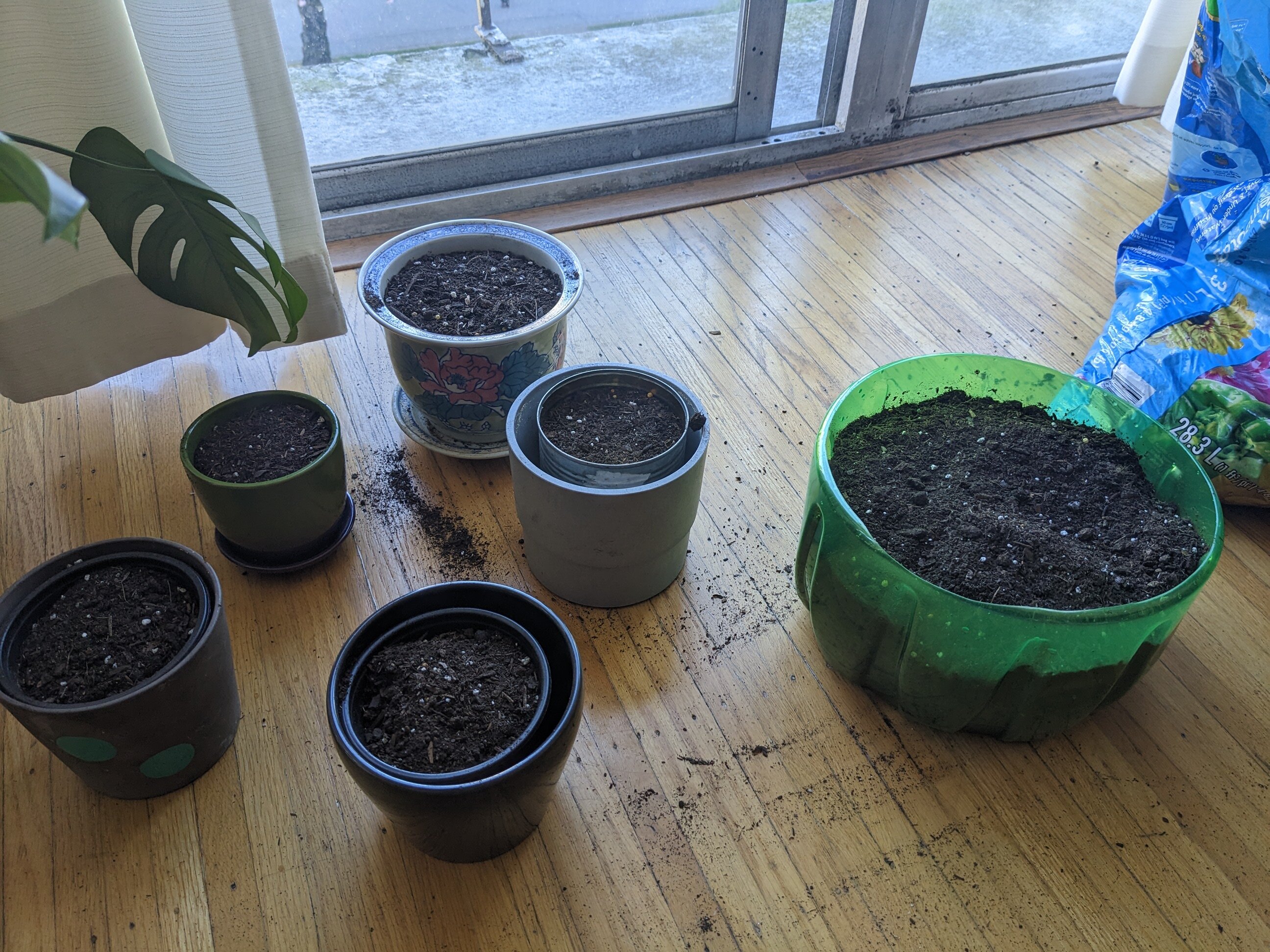
I then measured the radius of each pot and wrote it down, and then worked out what fraction of that tablespoon of flax seeds each pot would receive, based on what proportion of a square foot each pot's soil area took up:
1 ft² = 929 cm² AreaOfCircle(r) = (π * r²) ProportionOfFlaxForPot(r) = AreaOfCircle(r) / 929 cm²
I used a kitchen scale to measure the weight of 1 tablespoon of flax seeds, and then multiplied that by the proportion computed above for each pot.
So, if one pot had a radius of r = 6 cm, then its area would be
AreaOfCircle(6) = π * (6 cm)² = 113 cm²
and the proportion of the tablespoon of seeds would be
ProportionOfFlaxForPot(6 cm) = (π * (6 cm)²) / 929 cm² = 113 cm² / 929 cm² = 0.12
One tablespoon of the flax seeds I have weighs about 12 g. So,
12 g * 0.12 = 1.44 g
My kitchen scale isn't that accurate, so I rounded all of the error up, and here would have chosen to plant 2 g of seeds.
I repeated this process, and wrote down all of the masses needed. I did all of the math on a bamboo slide rule that Devine gifted me. It felt good to not use a computer where a computer was not needed, and I like how it slows me down and keeps my hands engaged.

3. Planting & Germination
First, I filled the pots most of the way up with soil.
Then I weighed out the flax seeds needed for each pot using the calculations done in the previous section, and then sprinkled the seeds over the surface area of the soil.
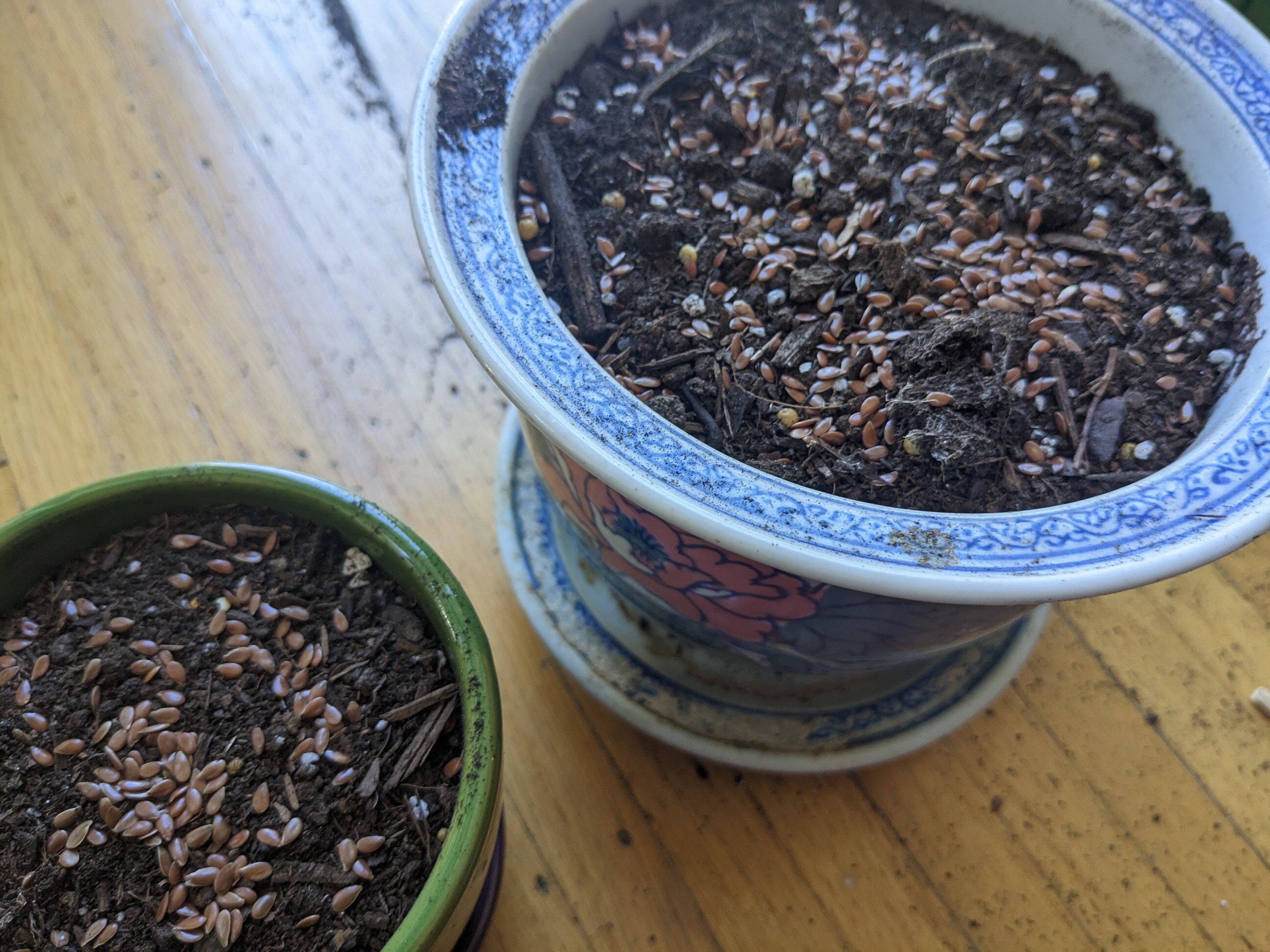
Lastly, I placed ½ inch of soil atop the seeds in each pot, and tamped down the soil flat with my hand. I was told they like this‒like a tight hug. :)
From there I've kept the soil moist, spraying daily with water.
It takes about 10 days until germination and sprouting. I've been keeping my seedlings indoors so far.
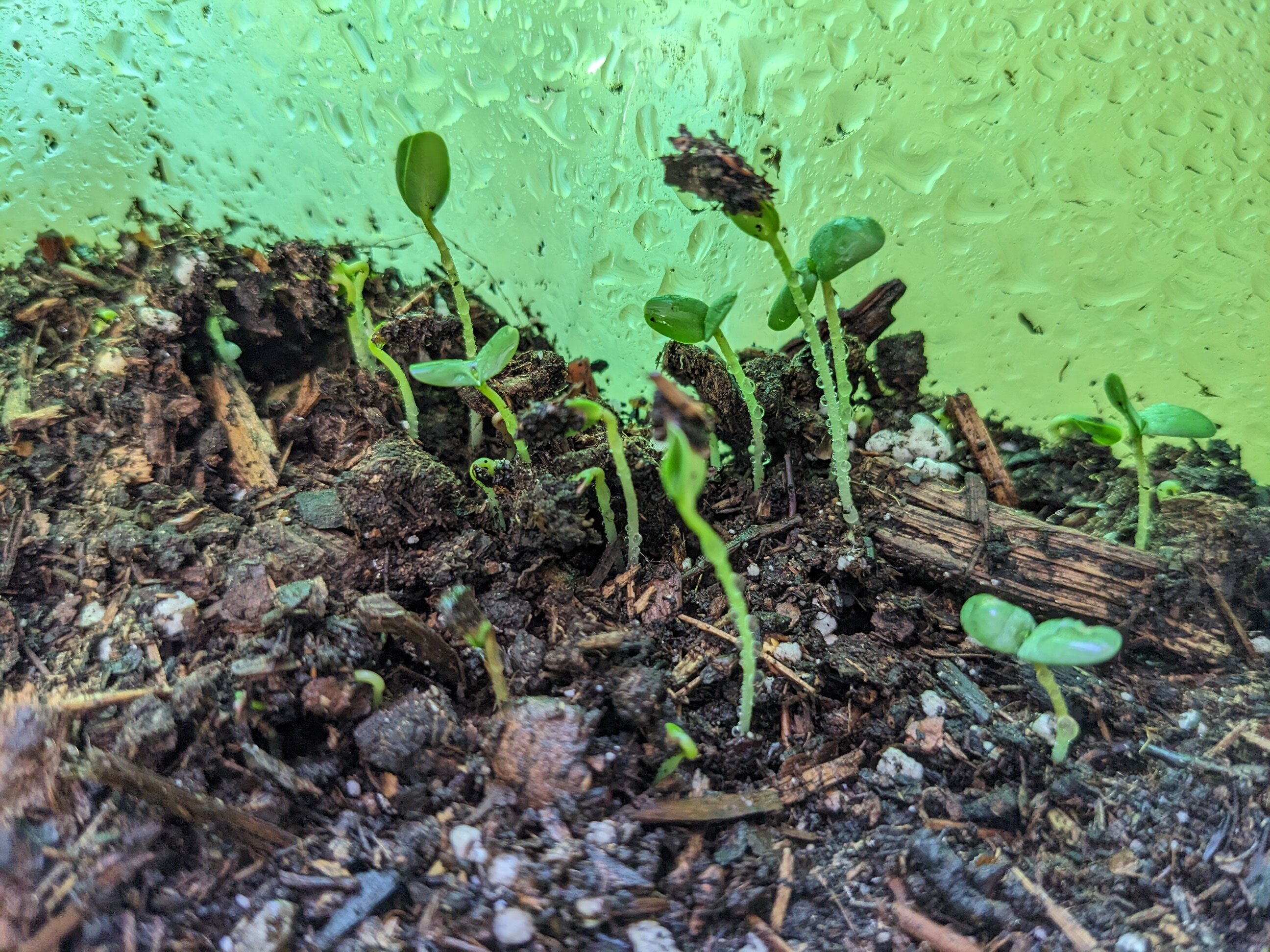
4. Growing

Flax likes full sun! I give them as much as I can.
It takes about 100 days from germination until time to harvest. I intend to wait until after they've bloomed and gone to seed before harvesting, so I can collect seeds for the next batch!
May

June

July

August

5. Harvesting & Drying
It is September, and the flax plants are yellowing and look ready to harvest.
Today is a mild, rainy morning here in the Pacific Northwest. I put on some chill music to pair with the patter of the rain, don gloves, and sit on the floor with all of the pots of flax. Let's harvest!
I simply pull them up by their roots. They're so strong that it's been perfectly fine to just grab a handful of stems and YANK them up out of the dirt. I've heard that it's good to try to preserve the roots as much as possible, since they too have some length of bast fibres in them. I kind of tickle at the soil-filled roots like I'm tickling the underside of a cat's jaw to loosen said oil out.
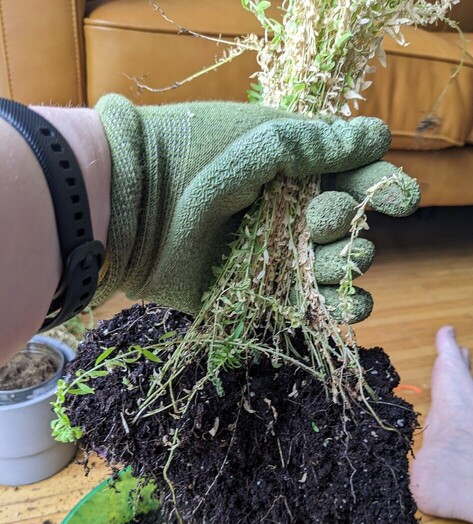
For the bigger pots, I divide the stalks into sections first, pull them up, and set them aside.
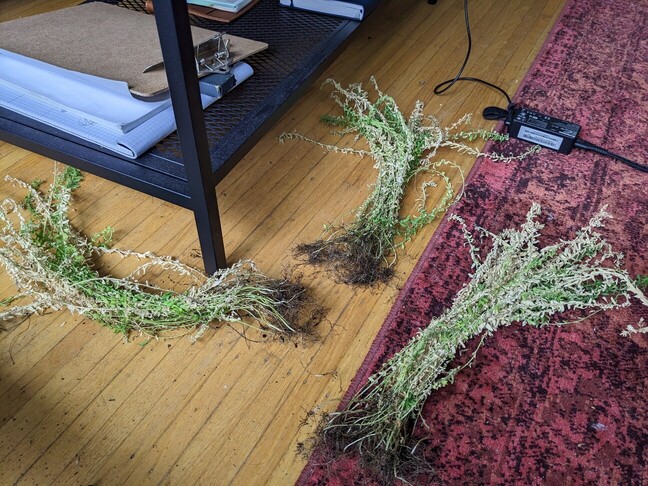
Ahead of time, I ran a line across my living room to start hanging up flax bundles. I used an adjustable hitch and a siberian hitch. These two knots go together beautifully for creating taut lines!
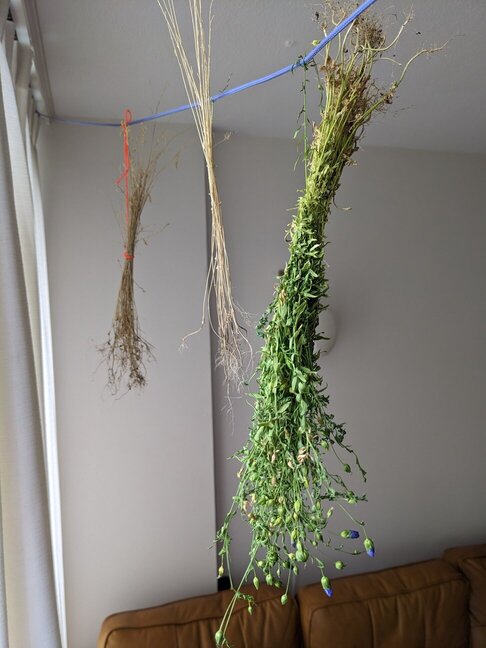
To hang a bundle, I pick a strand of flax to tie said bundle together. I just use an overhand knot on the bundle, and a clove hitch to affix it to the line.
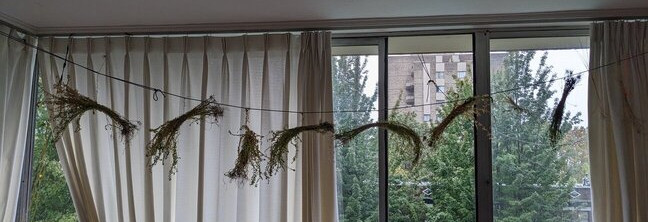
I busy myself with other autumnal projects now, as the bundles, time, and entropy do their work of drying.
6. Retting
coming soon